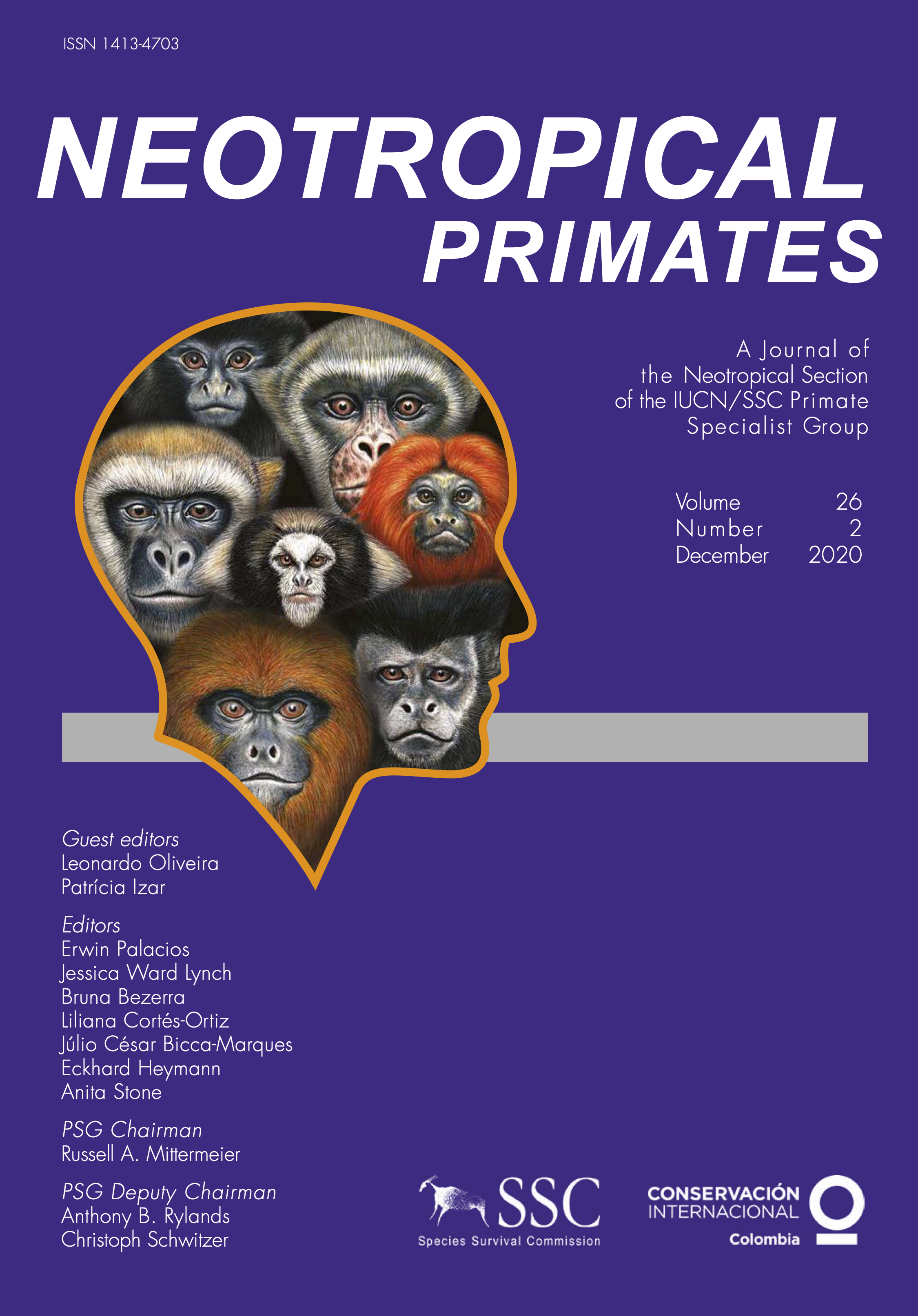Efecto de la temperatura ambiental sobre las posturas de descanso del mono aullador (Alouatta palliata)
DOI:
https://doi.org/10.62015/np.2020.v26.55Abstract
The effects of climate change are increasingly evident on biodiversity in general, altering the behavioral processes of organisms. Consequently, individuals must implement strategies that allow them to counteract these effects. One strategy is the use of body postures that allow mammals to maintain thermal equilibrium with respect to the environmental tem- perature. The objective of this study was to determine if the howler monkey (Alouatta palliata) uses specific body postures when resting that depend on ambient temperature. For eight months, resting behavior of monkeys was registered through focal sampling, across a range of ambient temperatures. Six different postures were observed, independent of sex, which were classified according to the proximity and position of the extremities to the body in: 1 = semi-fetal, 2 = sitting, 3 = lying, 4 = lying-back, 5 = stretched, and 6 = extended. In addition, we characterize the most common posture for each temperature range, determining that postures are significantly influenced by ambient temperature (rS = 0.779; n=21;P<0.001). Each posture was displayed in a specific temperature range, with significant differences (H=215.114; DF=5; P< 0. 001) in the temperature recorded for the different resting positions of the monkeys. Alouatta palliata, like other primate species, responds to environmental stimuli through behavioral strategies, allowing them to adapt to changing habitat conditions, and to maintain a thermal and energetic equilibrium.

Downloads
Published
Issue
Section
License

This work is licensed under a Creative Commons Attribution-NonCommercial-ShareAlike 4.0 International License.


